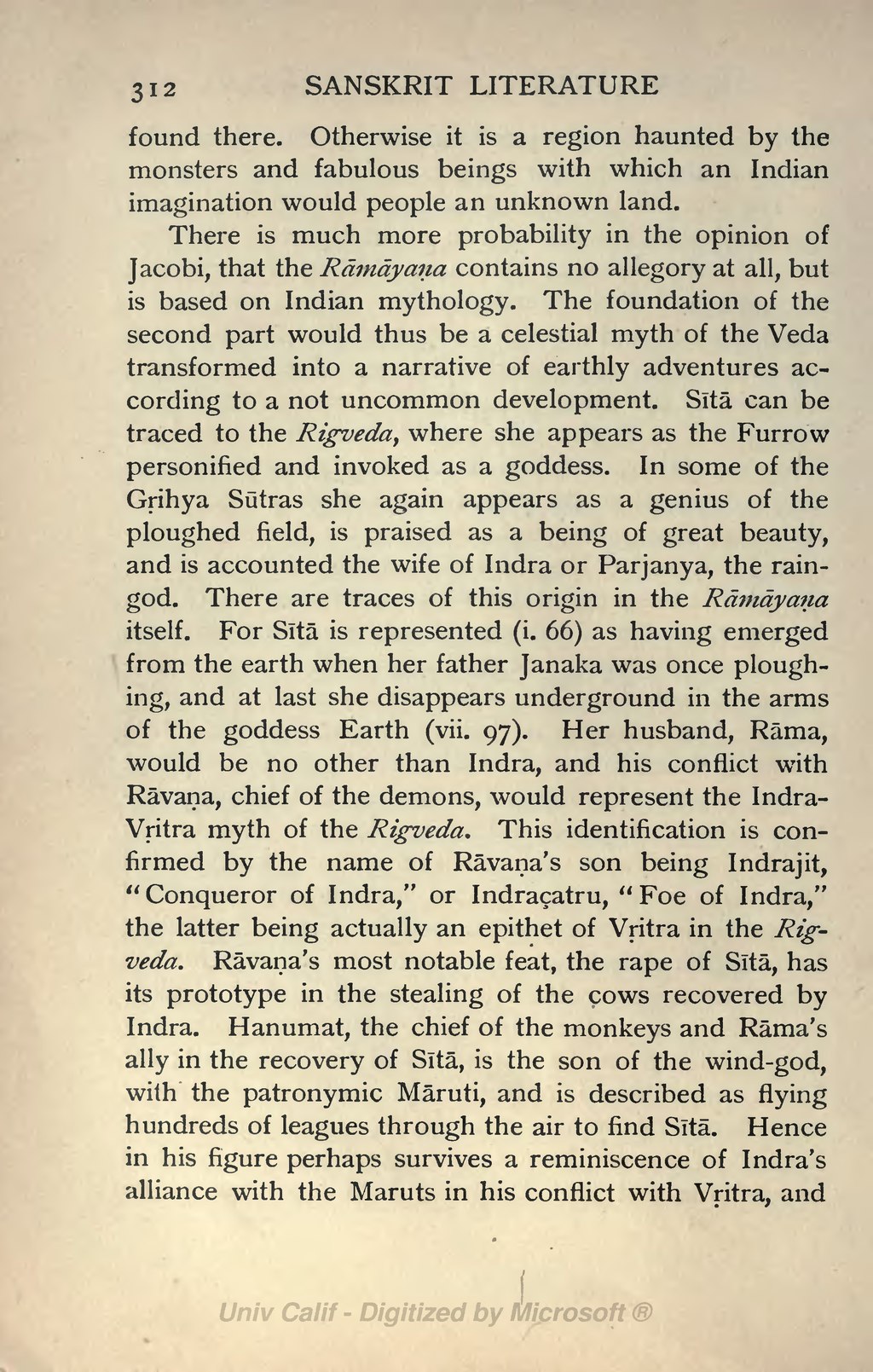found there. Otherwise it is a region haunted by the monsters and fabulous beings with which an Indian imagination would people an unknown land.
There is much more probability in the opinion of Jacobi, that the Rāmāyaṇa contains no allegory at all, but is based on Indian mythology. The foundation of the second part would thus be a celestial myth of the Veda transformed into a narrative of earthly adventures according to a not uncommon development. Sītā can be traced to the Rigveda, where she appears as the Furrow personified and invoked as a goddess. In some of the Gṛihya Sūtras she again appears as a genius of the ploughed field, is praised as a being of great beauty, and is accounted the wife of Indra or Parjanya, the rain-god. There are traces of this origin in the Rāmāyaṇa itself. For Sītā is represented (i. 66) as having emerged from the earth when her father Janaka was once ploughing, and at last she disappears underground in the arms of the goddess Earth (vii. 97). Her husband, Rāma, would be no other than Indra, and his conflict with Rāvaṇa, chief of the demons, would represent the Indra-Vṛitra myth of the Rigveda. This identification is confirmed by the name of Rāvaṇa's son being Indrajit, "Conqueror of Indra," or Indraçatru, "Foe of Indra," the latter being actually an epithet of Vṛitra in the Rigveda. Rāvaṇa's most notable feat, the rape of Sītā, has its prototype in the stealing of the cows recovered by Indra. Hanumat, the chief of the monkeys and Rāma's ally in the recovery of Sītā, is the son of the wind-god, with the patronymic Māruti, and is described as flying hundreds of leagues through the air to find Sītā. Hence in his figure perhaps survives a reminiscence of Indra's alliance with the Maruts in his conflict with Vṛitra, and
